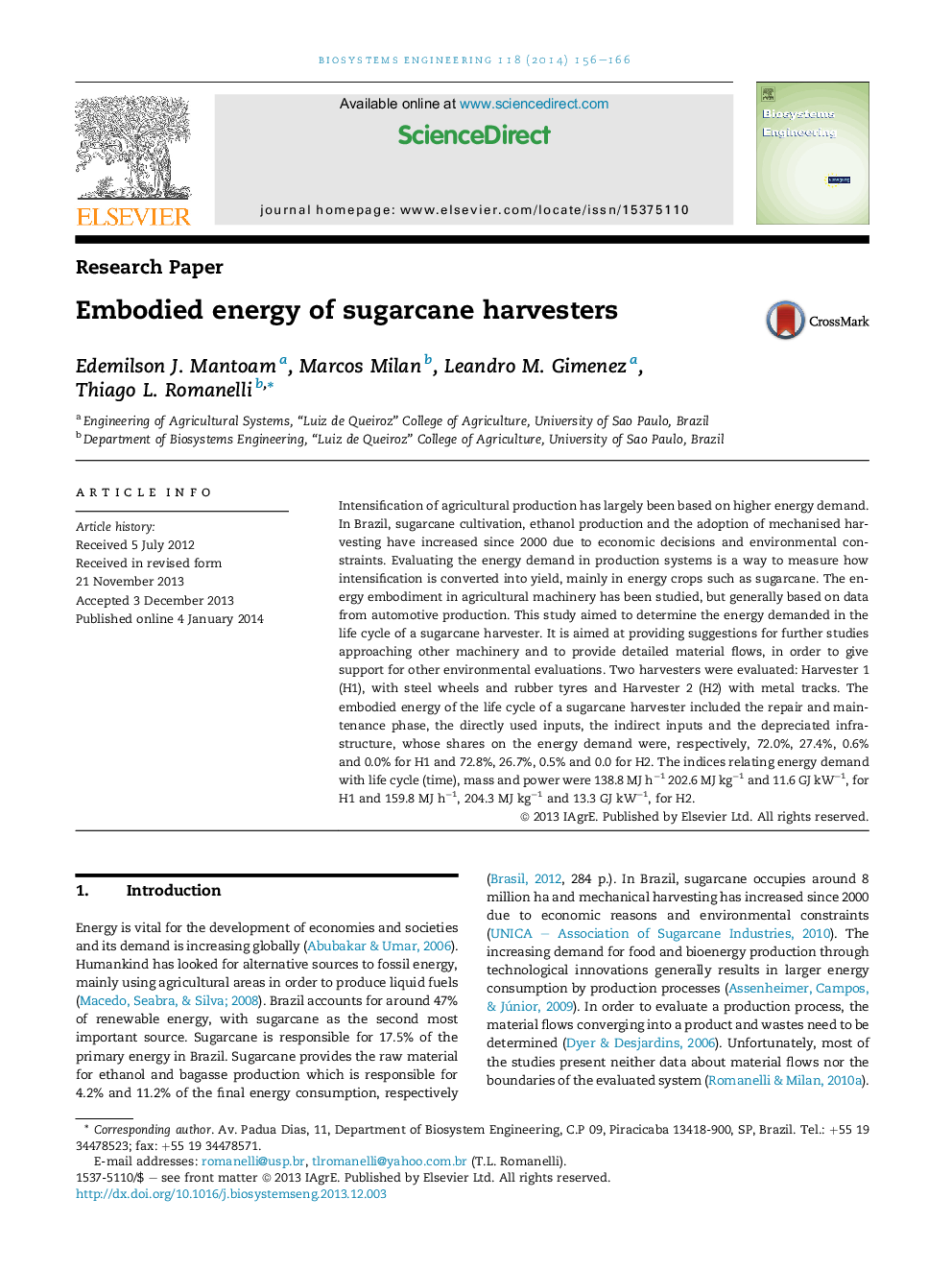| Article ID | Journal | Published Year | Pages | File Type |
|---|---|---|---|---|
| 1711217 | Biosystems Engineering | 2014 | 11 Pages |
•Labour should not be considered for energy embodiment for agricultural machinery.•Repair/maintenance and the machinery body require most of the embodied energy.•Steel, iron, fuel and lubricants represent 95.3% of energy in repair/maintenance.•Steel, iron and aluminium represent 90.5% of the energy in machinery parts.•Indices obtained in this study are 2.47–2.72 times those from the 1960s and 1970s.
Intensification of agricultural production has largely been based on higher energy demand. In Brazil, sugarcane cultivation, ethanol production and the adoption of mechanised harvesting have increased since 2000 due to economic decisions and environmental constraints. Evaluating the energy demand in production systems is a way to measure how intensification is converted into yield, mainly in energy crops such as sugarcane. The energy embodiment in agricultural machinery has been studied, but generally based on data from automotive production. This study aimed to determine the energy demanded in the life cycle of a sugarcane harvester. It is aimed at providing suggestions for further studies approaching other machinery and to provide detailed material flows, in order to give support for other environmental evaluations. Two harvesters were evaluated: Harvester 1 (H1), with steel wheels and rubber tyres and Harvester 2 (H2) with metal tracks. The embodied energy of the life cycle of a sugarcane harvester included the repair and maintenance phase, the directly used inputs, the indirect inputs and the depreciated infra-structure, whose shares on the energy demand were, respectively, 72.0%, 27.4%, 0.6% and 0.0% for H1 and 72.8%, 26.7%, 0.5% and 0.0 for H2. The indices relating energy demand with life cycle (time), mass and power were 138.8 MJ h−1 202.6 MJ kg−1 and 11.6 GJ kW−1, for H1 and 159.8 MJ h−1, 204.3 MJ kg−1 and 13.3 GJ kW−1, for H2.
